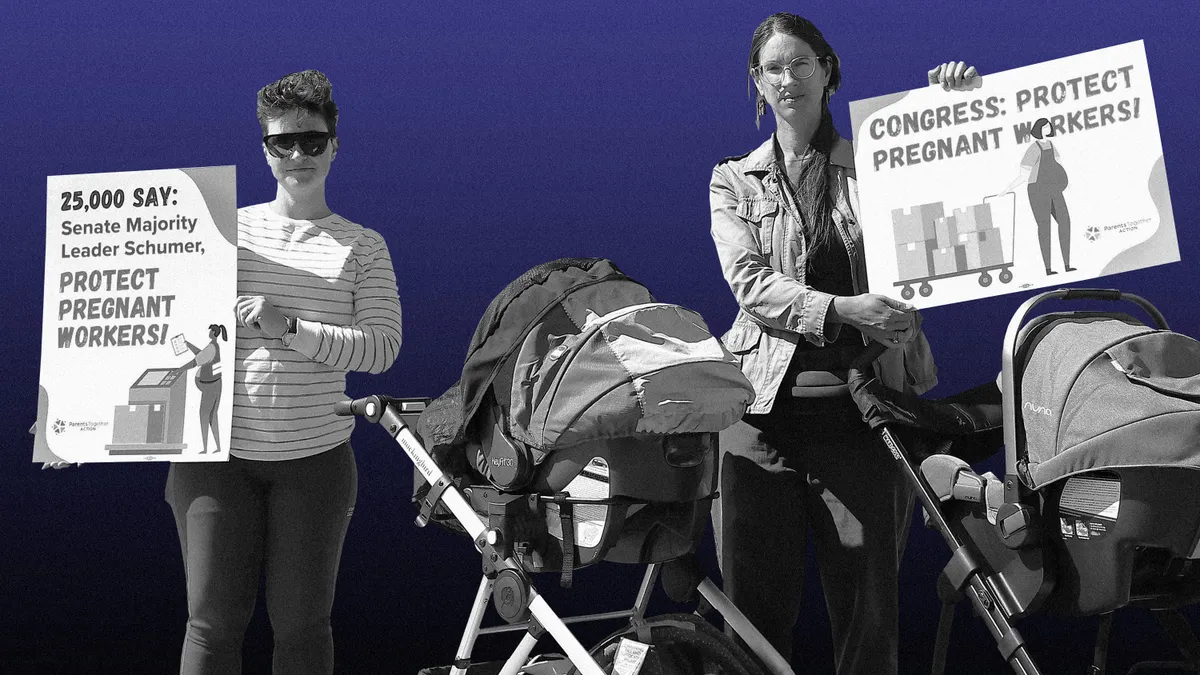As the U.S. Equal Employment Opportunity Commission cleverly pointed out, the “due date” of the Pregnant Worker’s Fairness Act is Tuesday. But what should employers and HR professionals know about the law and how to be compliant with it?
1. The new “Know Your Rights” poster is available
As the PWFA goes into effect, per EEOC direction, employers need to update their worksite EEOC posters, which now nod to the new protections.
2. The PWFA will fill in legal gaps
The law was passed to give workers with pregnancy-related conditions the same legal protection as workers with disabilities. Pregnant workers and job applicants at covered employers are now guaranteed accommodations, too.
Prior to the PWFA, the main employment laws in this arena were the Pregnancy Discrimination Act (which did not ensure accommodations) and the Americans with Disabilities Act (which did not cover pregnancy). Title VII of the Civil Rights Act of 1965 only accommodates pregnant people if other people similarly situated receive that treatment, EEOC Vice Chair Jocelyn Samuels explained at the Society for Human Resource Management compliance conference earlier this year.
And whereas the Family and Medical Leave Act provides leave for pregnancy, childbirth and caregiving afterward, the PWFA provides on-the-job protections for parents, an employment attorney explained.
The EEOC has also been sure to note that PWFA does not replace any law that is “more protective” of expecting workers or workers who just gave birth. As an employment lawyer confirmed to HR Dive, the PWFA addresses “severe” pregnancy-related conditions along with childbirth-related complications. And as Samuels stated previously, the approach to PWFA accommodation should feel familiar to HR professionals who have worked out ADA-compliant accommodations.
3. PWFA accommodations can be simple
Like the ADA, the PWFA also has an undue hardship clause. But it’s likely that employers can be compliant and accommodate pregnant workers with simple tweaks to workflow or the worksite, an employment lawyer suggested. For example, a PWFA accommodation may include a stool for physical breaks.
Another example: Many workplaces require “clean” desks, as in spaces free of food for image-based reasons. But one PWFA accommodation may be to allow a pregnant worker to have drinks or food at their desk.
In its May 2021 report on the PWFA, the House Committee on Education and Labor cited the American College of Obstetricians and Gynecologists’ advice to offer closer parking, flexible hours, more appropriately sized uniforms and safety apparel and excusing workers from more “strenuous activities.” Lactation may also be a factor in accommodations, an attorney told HR Dive.
3. BTW, leave is not necessarily an accommodation
Similar to modes of operation regarding the ADA, employers should not skip ahead to leave as a primary accommodation, an attorney told HR Dive.
4. The EEOC has Spanish-language and disability-friendly posters available
Below are links to “Know Your Rights” posters that are meant to be both shared electronically and posted in-person. The EEOC also provides a screenreader-friendly PDF version, and both digital and in-person posters in Spanish.
- (PRINTABLE) "Know Your Rights" poster in English
- (PRINTABLE) "Know Your Rights" poster in Spanish
- (ELECTRONIC) "Know Your Rights" PDF for Screen Readers
- (ELECTRONIC) "Know Your Rights" HTML in English
- (ELECTRONIC) "Know Your Rights" HTML in Spanish














